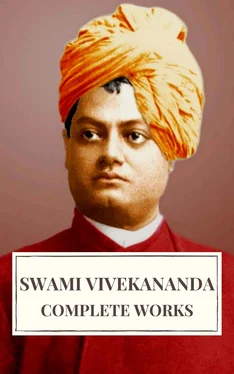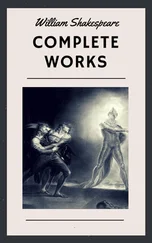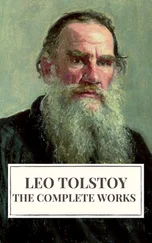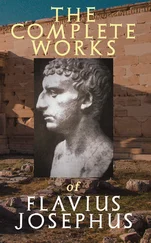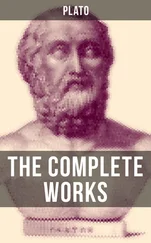There was once a minister to a great king. He fell into disgrace. The king, as a punishment, ordered him to be shut up in the top of a very high tower. This was done, and the minister was left there to perish. He had a faithful wife, however, who came to the tower at night and called to her husband at the top to know what she could do to help him. He told her to return to the tower the following night and bring with her a long rope, some stout twine, pack thread, silken thread, a beetle, and a little honey. Wondering much, the good wife obeyed her husband, and brought him the desired articles. The husband directed her to attach the silken thread firmly to the beetle, then to smear its horns with a drop of honey, and to set it free on the wall of the tower, with its head pointing upwards. She obeyed all these instructions, and the beetle started on its long journey. Smelling the honey ahead it slowly crept onwards, in the hope of reaching the honey, until at last it reached the top of the tower, when the minister grasped the beetle, and got possession of the silken thread. He told his wife to tie the other end to the pack thread, and after he had drawn up the pack thread, he repeated the process with the stout twine, and lastly with the rope. Then the rest was easy. The minister descended from the tower by means of the rope, and made his escape. In this body of ours the breath motion is the “silken thread”; by laying hold of and learning to control it we grasp the pack thread of the nerve currents, and from these the stout twine of our thoughts, and lastly the rope of Prana, controlling which we reach freedom.
We do not know anything about our own bodies; we cannot know. At best we can take a dead body, and cut it in pieces, and there are some who can take a live animal and cut it in pieces in order to see what is inside the body. Still, that has nothing to do with our own bodies. We know very little about them. Why do we not? Because our attention is not discriminating enough to catch the very fine movements that are going on within. We can know of them only when the mind becomes more subtle and enters, as it were, deeper into the body. To get the subtle perception we have to begin with the grosser perceptions. We have to get hold of that which is setting the whole engine in motion. That is the Prana, the most obvious manifestation of which is the breath. Then, along with the breath, we shall slowly enter the body, which will enable us to find out about the subtle forces, the nerve currents that are moving all over the body. As soon as we perceive and learn to feel them, we shall begin to get control over them, and over the body. The mind is also set in motion: by these different nerve currents, so at last we shall reach the state of perfect control over the body and the mind, making both our servants. Knowledge is power. We have to get this power. So we must begin at the beginning, with Pranayama, restraining the Prana. This Pranayama is a long subject, and will take several lessons to illustrate it thoroughly. We shall take it part by part.
We shall gradually see the reasons for each exercise and what forces in the body are set in motion. All these things will come to us, but it requires constant practice, and the proof will come by practice. No amount of reasoning which I can give you will be proof to you, until you have demonstrated it for yourselves. As soon as you begin to feel these currents in motion all over you, doubts will vanish, but it requires hard practice every day. You must practice at least twice every day, and the best times are towards the morning and the evening. When night passes into day, and day into night, a state of relative calmness ensues. The early morning and the early evening are the two periods of calmness. Your body will have a like tendency to become calm at those times. We should take advantage of that natural condition and begin then to practice. Make it a rule not to eat until you have practiced; if you do this, the sheer force of hunger will break your laziness. In India they teach children never to eat until they have practiced or worshipped, and it becomes natural to them after a time; a boy will not feel hungry until he has bathed and practiced.
Those of you who can afford it will do better to have a room for this practice alone. Do not sleep in that room, it must be kept holy. You must not enter the room until you have bathed, and are perfectly clean in body and mind. Place flowers in that room always; they are the best surroundings for a Yogi; also pictures that are pleasing. Burn incense morning and evening. Have no quarrelling, nor anger, nor unholy thought in that room. Only allow those persons to enter it who are of the same thought as you. Then gradually there will be an atmosphere of holiness in the room, so that when you are miserable, sorrowful, doubtful, or your mind is disturbed, the very fact of entering that room will make you calm. This was the idea of the temple and the church, and in some temples and churches you will find it even now, but in the majority of them the very idea has been lost. The idea is that by keeping holy vibrations there the place becomes and remains illumined. Those who cannot afford to have a room set apart can practice anywhere they like. Sit in a straight posture, and the first thing to do is to send a current of holy thought to all creation. Mentally repeat, “Let all beings be happy; let all beings be peaceful; let all beings be blissful.” So do to the east, south, north and west. The more you do that the better you will feel yourself. You will find at last that the easiest way to make ourselves healthy is to see that others are healthy, and the easiest way to make ourselves happy is to see that others are happy. After doing that, those who believe in God should pray — not for money, not for health, nor for heaven; pray for knowledge and light; every other prayer is selfish. Then the next thing to do is to think of your own body, and see that it is strong and healthy; it is the best instrument you have. Think of it as being as strong as adamant, and that with the help of this body you will cross the ocean of life. Freedom is never to be reached by the weak. Throw away all weakness. Tell your body that it is strong, tell your mind that it is strong, and have unbounded faith and hope in yourself.
Prânâyâma is not, as many think, something about breath; breath indeed has very little to do with it, if anything. Breathing is only one of the many exercises through which we get to the real Pranayama. Pranayama means the control of Prâna. According to the philosophers of India, the whole universe is composed of two materials, one of which they call Âkâsha. It is the omnipresent, all-penetrating existence. Everything that has form, everything that is the result of combination, is evolved out of this Akasha. It is the Akasha that becomes the air, that becomes the liquids, that becomes the solids; it is the Akasha that becomes the sun, the earth, the moon, the stars, the comets; it is the Akasha that becomes the human body, the animal body, the plants, every form that we see, everything that can be sensed, everything that exists. It cannot be perceived; it is so subtle that it is beyond all ordinary perception; it can only be seen when it has become gross, has taken form. At the beginning of creation there is only this Akasha. At the end of the cycle the solids, the liquids, and the gases all melt into the Akasha again, and the next creation similarly proceeds out of this Akasha.
By what power is this Akasha manufactured into this universe? By the power of Prana. Just as Akasha is the infinite, omnipresent material of this universe, so is this Prana the infinite, omnipresent manifesting power of this universe. At the beginning and at the end of a cycle everything becomes Akasha, and all the forces that are in the universe resolve back into the Prana; in the next cycle, out of this Prana is evolved everything that we call energy, everything that we call force. It is the Prana that is manifesting as motion; it is the Prana that is manifesting as gravitation, as magnetism. It is the Prana that is manifesting as the actions of the body, as the nerve currents, as thought force. From thought down to the lowest force, everything is but the manifestation of Prana. The sum total of all forces in the universe, mental or physical, when resolved back to their original state, is called Prana. “When there was neither aught nor naught, when darkness was covering darkness, what existed then? That Akasha existed without motion.” The physical motion of the Prana was stopped, but it existed all the same.
Читать дальше
